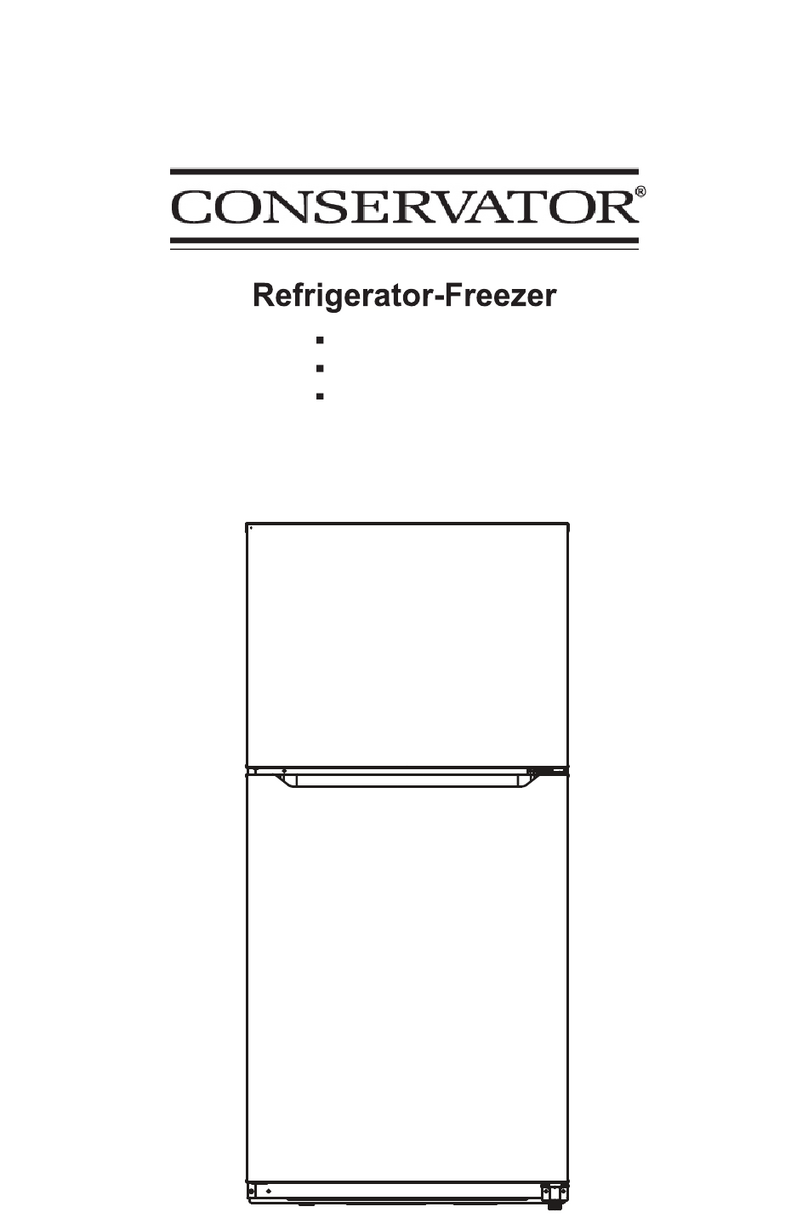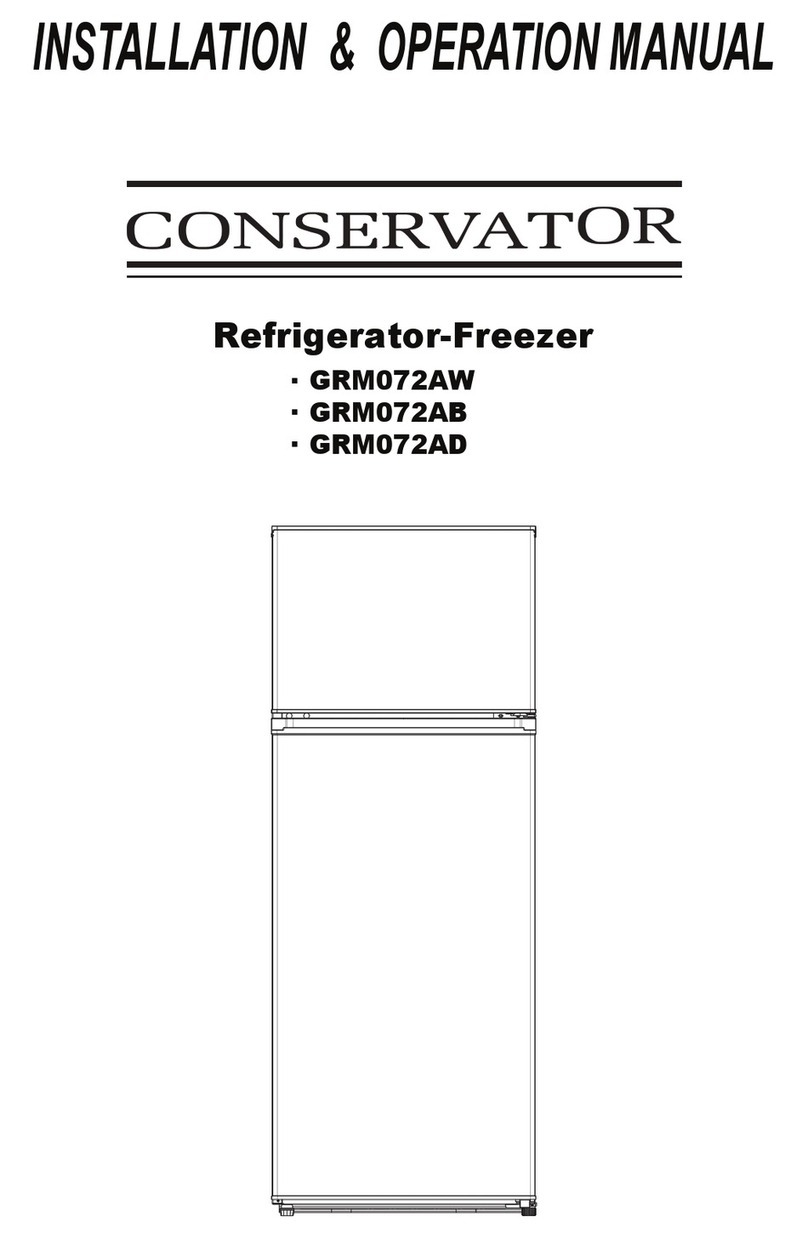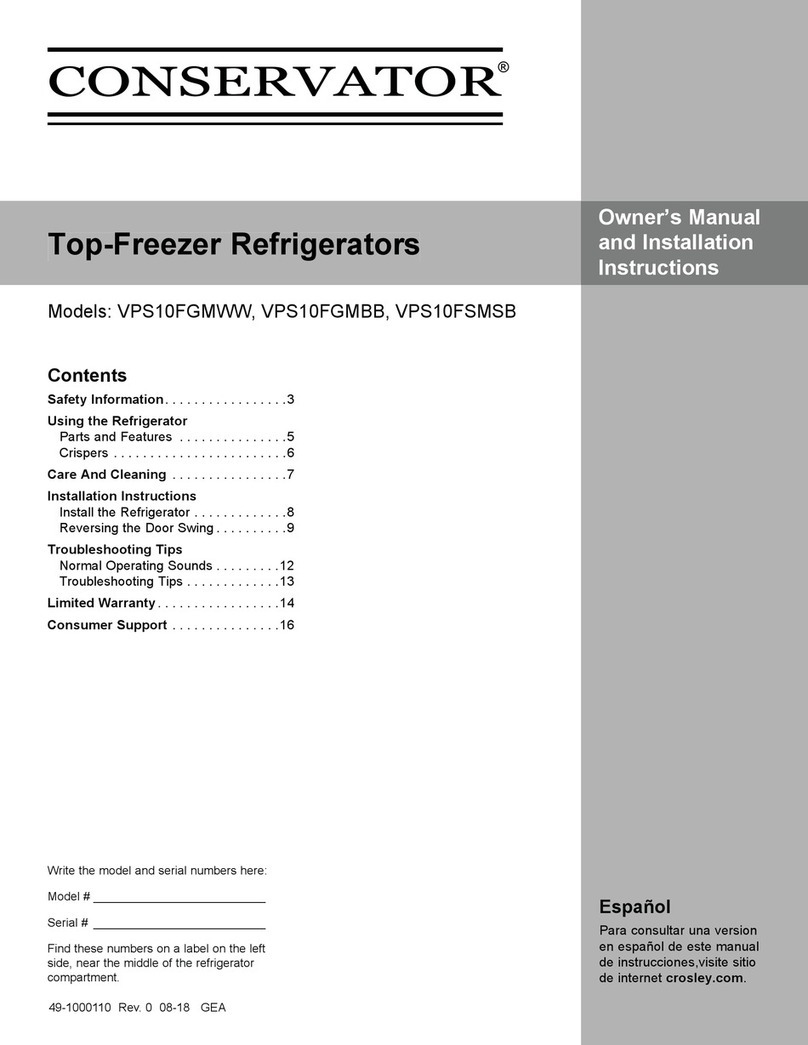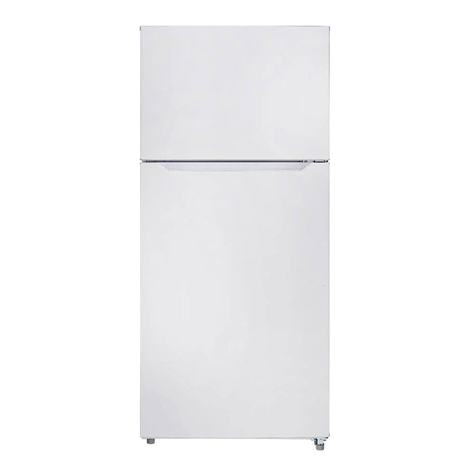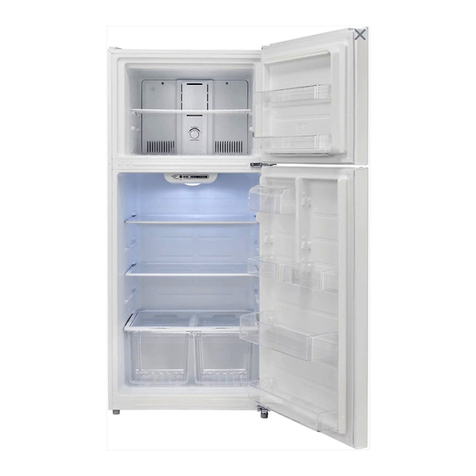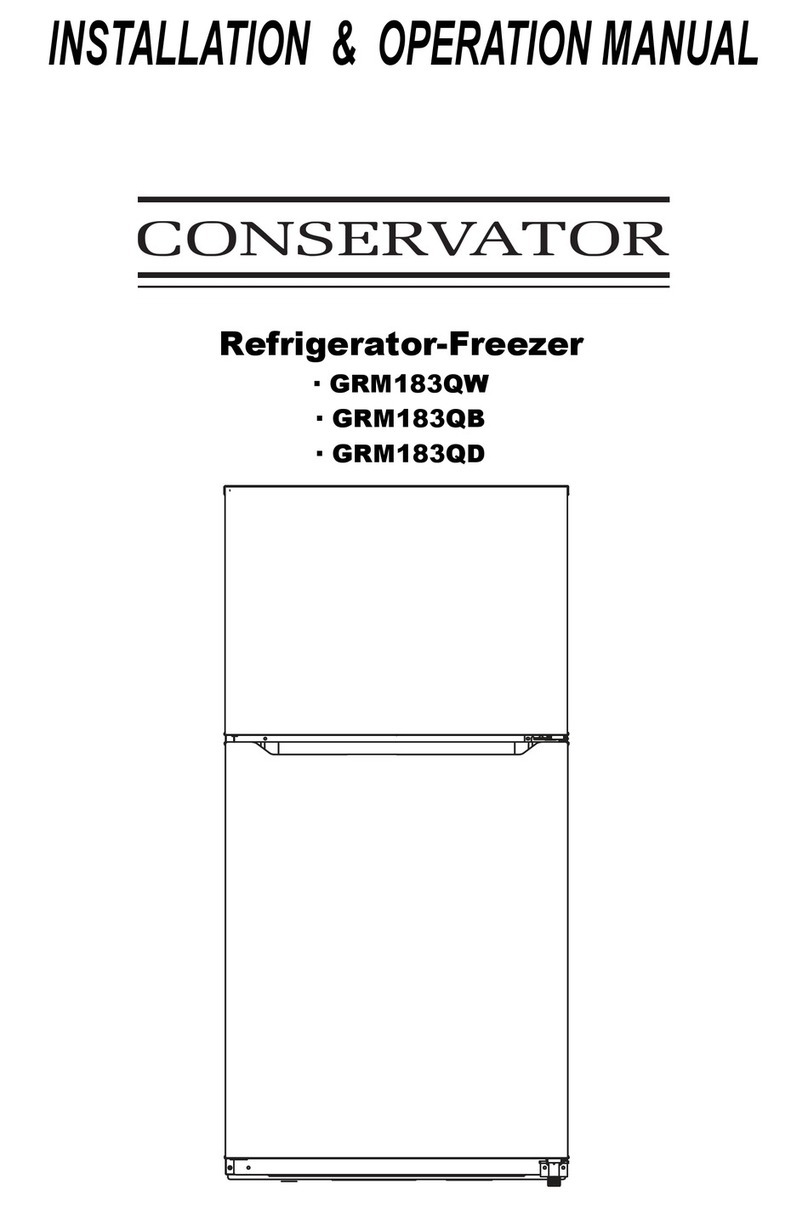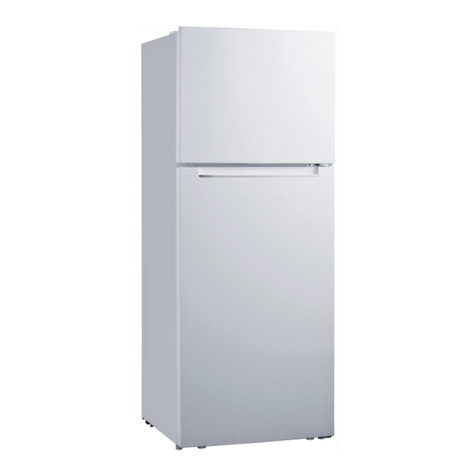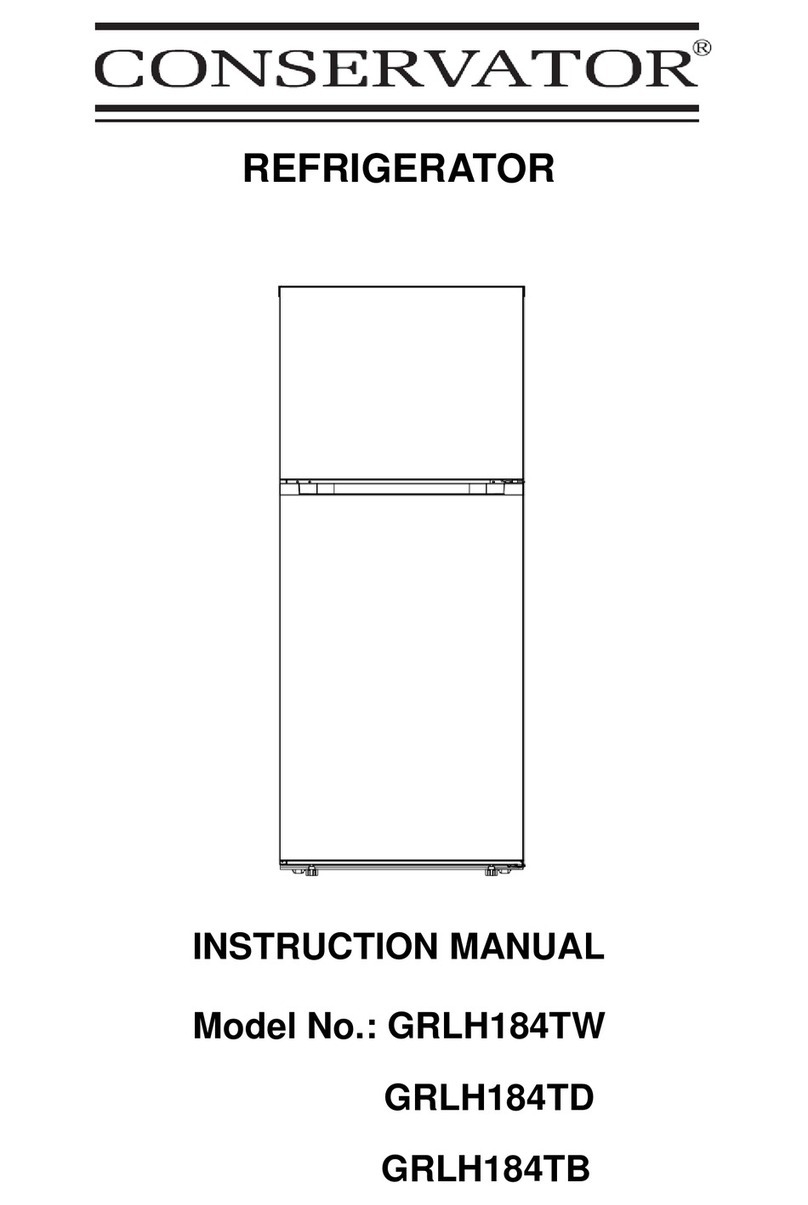
WARNING
Electric Shock Hazard
Failure to follow these instructions can result in electric shock, fire, or death.
1.WARNING–Keep ventilation openings, in both your refrigerator and the built-in structure, clear of obstruction.
2.WARNING–Do not touch the interior of your refrigerator with wet hands. This could result in
frostbite.
3.WARNING–Do not use mechanical devices or other means to accelerate the defrosting process, other than those
recommended by the manufacturer.
4.WARNING–Do not damage the refrigerant circuit.
5.WARNING–Do not damage the refrigerant tubing when handling, moving, or using your refrigerator.
6.WARNING–DANGER—Never allow children to play with, operate, or crawl inside your refrigerator.
Risk of child entrapment. Before you throw away your old refrigerator:
• Take off the door.
• Leave the shelves in place so that children may not easily climb inside.
7. WARNING—Do not use electrical appliances inside the food storage compartments of the appliance unless they are of
the type recommended by the manufacturer.
8.Unplug your refrigerator before carrying out user maintenance on it.
9.If a component part is damaged, it must be replaced by the manufacturer, its service agent, or similar qualified persons
in order to avoid a hazard.
10.Follow local regulations regarding disposal of your refrigerator due to flammable refrigerant and gas. All refrigeration
products contain refrigerants, which under the guidelines of federal law must be removed before disposal. It is the
consumer's responsibility to comply with federal and local regulations when disposing of this product.
11. Do not store explosive substances such as aerosol cans with a flammable propellant in this appliance.
12 .This appliance is intended to be used in household and similar applications such as
– staff kitchen areas in shops, offices and other working environments.
– farm houses and by clients in hotels, motels and other residential type environments.
– bed and breakfast type environments.
– catering and similar non-retail applications.
Grounding requirement
Your refrigerator must be grounded. Your refrigerator is equipped with a cord having a grounding wire with a grounding
plug. The plug must be inserted into an outlet that is correctly installed and grounded.
Incorrect use of the grounding plug can result in a risk of electric shock. Consult a qualified electrician or service person if
the grounding instructions are not completely understood, or if doubt exists as to whether your refrigerator is
correctlygrounded
Locks
If your Freezer is fitted with a lock, to prevent children being entrapped keep the key out of reach and not in the vicinity of
the appliance. If disposing of an old Freezer break off any old locks or latches as a safeguard.
Electrical Connection
~WARNING~
Improper use of the grounded plug can result in the risk of electrical shock. If the power cord is damaged, have it
replaced by an authorized service center.
This refrigerator should be properly grounded for your safety. The power cord of this refrigerator is equipped with a
three-prong plug which mates with standard three prong wall outlets to minimize the possibility of electrical shock.
Do not, under any circumstances, cut or remove the third ground prong from the power cord supplied.
This refrigerator requires a standard 115V A.C. ~/60Hz electrical outlet with three-prong ground.
This refrigerator is not designed to be used with an inverter.
The cord should be secured behind the refrigerator and not left exposed or dangling to prevent accidental injury.
Never unplug the refrigerator by pulling the power cord. Always grip the plug firmly and pull straight out from the
receptacle.
